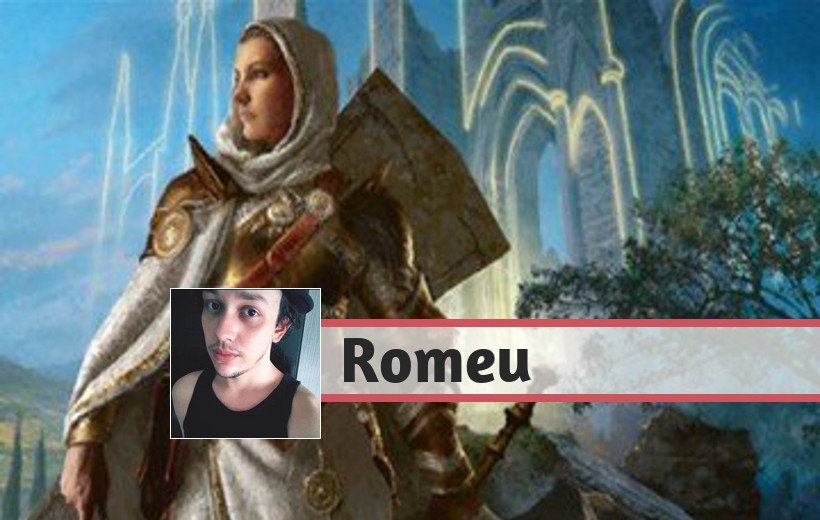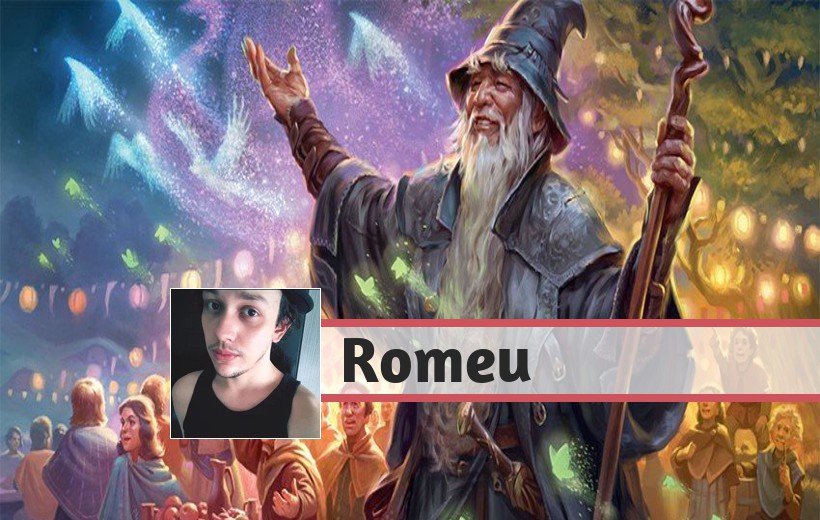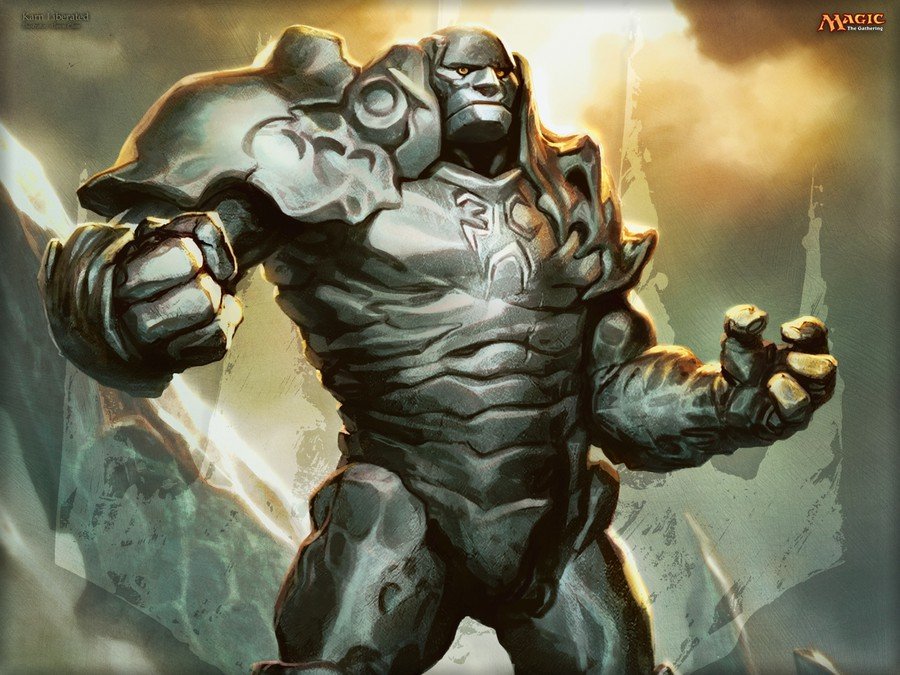We're back with another Metagame, where we'll analyze the results of this weekend's events!
As part of my opening remarks, I inform you that I will not be covering the Historic format in this article, as there have not been enough tournaments to make it possible to do a Historic Metagame survey this week.
We'll probably get back to the format next week, and possibly with the additions of JumpStart: Historic Horizons that came out last Thursday at Magic Arena!
Standard
Saturday's Standard Challenge finished with the following Top 32:
Ad
14 Sultai Ultimatum
4 Naya Winota
3 Naya Adventures
3 Rakdos Sacrifice
2 Dimir Control
2 Gruul Magda
1 Jund Magda
1 Dimir Rogues
1 Mono-Green Aggro
1 Azorius Artifacts
And its Top 8 was:
5 Sultai Ultimatum
1 Dimir Control
1 Gruul Magda
1 Naya Winota
On Sunday, the event's Top 32 was:
9 Sultai Ultimatum
8 Dimir Control
4 Naya Winota
4 Gruul Magda
2 Naya Adventures
2 Dimir Rogues
1 Mono-Red Aggro
1 Rakdos Sacrifice
1 Mono-Green Aggro
And its Top 8 had the following decks:
3 Gruul Magda
1 Sultai Ultimatum
1 Mono-Red Aggro
1 Naya Adventures
1 Dimir Control
1 Naya Winota
We have observed an interesting thing in Standard this week:
Sultai Ultimatum and Dimir Control are moving up significantly in the Magic Online Challenges, but these numbers are not being reflected in the Magic Arena according to Untapped.gg's stats, where Sultai Ultimatum is below Gruul Magda and Naya Winota in winrate numbers.
So, the rise of Sultai Ultimatum in recent weeks seems to be a specific effect in Magic Online that is not being reflected, so far, in Magic Arena.
In other words, it's a moment where Magic Online and Magic Arena have different metagames regarding which decks are making the most results, an effect that we commonly see occur in the real world in eternal formats, where the Modern/ Legacy's metagame in one region in one country is entirely different from the metagame of another region.
I don't think this has any practical impacts other than that it becomes obvious that if you're playing Challenges you need to respect Control decks more significantly than you might in Magic Arena, but it's the first time since I started this series of articles that I see this difference happening so remarkably.
Pioneer
On Saturday, Pioneer Challenge's Top 32 had the following decks:
4 Vampires
4 Rakdos Pyromancer
3 Jund Sacrifice
3 Azorius Ensoul
3 Jeskai Control
2 Lotus Combo
2 Niv-to-Light
2 Izzet Phoenix
2 Four-Color Ascendancy
1 Bant Company
1 Bant Spirits
1 Boros Burn
1 Boros Feather
1 Izzet Dragons
1 Temur Flash
1 Dimir Control
And its Top 8 was:
2 Jund Sacrifice
2 Four-Color Ascendancy
2 Jeskai Control
1 Lotus Combo
1 Bant Company
On Sunday, Pioneer Challenge's Top 32 finished with these decks:
6 Rakdos Pyromancer
4 Vampires
3 Izzet Phoenix
3 Azorius Ensoul
2 Jeskai Control
2 Mono-Green Stompy
2 Boros Burn
2 Jund Sacrifice
2 Niv-to-Light
1 Bant Spirits
1 Mono-Blue Spirits
1 Mono-Red Aggro
1 Bant Company
And its Top 8 was:
1 Bant Company
1 Mono-Green Stompy
1 Jeskai Control
1 Vampires
1 Boros Burn
1 Izzet Phoenix
1 Rakdos Pyromancer
1 Bant Spirits
Before we talk about the events themselves, did you know that we will have Pioneer Challenger Decks coming out on October 15th?
It's true, and you can check out the decklists here.
And as I mentioned in this article (where I even make a review of lists and all releases announced for 2022), this is the best decision Wizards has made for Pioneer's sake after such a turbulent year for the format as 2020, and it will certainly be of great help in promoting the format in stores and local communities.
Ad
So, here's the same advice I left in the article: if you want to support Pioneer, buy this product, show Wizards that the community approves this decision, show that Pioneer brings a good financial return, and that the format's Challenger Decks are very welcome both to bring in new players and to make the format more accessible compared to the other eternal formats!
The highlight this week is Bant Company, which made results in the Top 8 of both events.
Bant Company is essentially a variant of Selesnya Company with a splash for blue, which enables the use of an extremely efficient removal with Deputy of Detention, adding efficient answers like Mystical Dispute to the Sideboard, and its main inclusion seems to be Linvala, Shield of Sea Gate, which basically functions as a Selfless Spirit with a more relevant body, as its Party ability has no efficient means of being activated during the course of the match.
I'm not sure how superior this version of Company decks is to Selesnya Company, but the addition of better answers that are available in blue makes some sense in a Metagame as plural as we've seen Pioneer become in recent months.
We will likely see Bant Company performing other results next week, as it appears to be a more comprehensive version of its predecessor.
Modern
Modern Challenge's Top 32 on Saturday had these decks on Top 32:
3 Dimir Mill
3 Grixis Lurrus
3 Hammer Time
2 Azorius Control
2 Boros Burn
2 Living End
2 Temur Tempo
1 Jund Lurrus
1 Rakdos Lurrus
1 Mardu Lurrus
1 Belcher
1 Jund Delirium
1 Four-Color Creativity
1 Bogles
1 Eldrazi Tron
1 Heliod Company
1 Hardened Scales
1 Infect
1 Dredge
1 Tron
1 Ad Nauseam
And its Top 8 was:
2 Boros Burn
1 Jund Lurrus
1 Azorius Control
1 Dimir Mill
1 Mardu Lurrus
1 Grixis Lurrus
1 Belcher
On Sunday, the event finished with the following Top 32:
5 Izzet Tempo
3 Hammer Time
3 Jund Lurrus
3 Living End
2 Boros Burn
2 Tron
2 Gruul Delirium
1 Naya Delirium
1 Mardu Lurrus
1 Temur Cascade
1 Golgari Yawgmoth
1 Hardened Scales
1 Grixis Shadow
1 Heliod Company
1 Elementals
1 Azorius Spirits
1 Soulherder
1 Four-Color Creativity
1 Azorius Control
And its Top 8 was:
2 Living End
1 Izzet Tempo
1 Azorius Control
1 Temur Cascade
1 Boros Burn
1 Golgari Yawgmoth
1 Hammer Time
We had some new stuff happening on this weekend's Challenges.
The first point is that Living End decks are beginning to migrate their base to a list closer to a Midrange deck that uses the card to gain value by joining cards from the archetype along with cards from Temur Cascade to create another variant.
This variant manages to play the fair game much better than lists that use Grief as it has more castable cards like Bonecrusher Giant, Brazen Borrower and Endurance, betting on the combination of Shardless Agent + Living End to quickly turn the game in unfavorable situations where the opponent has a superior board position, while this base also avoids games where the deck does absolutely nothing in the first few turns, putting more pressure on disruptive decks.
Ad
The highlight of the list is Titanoth Rex, a cycling card that is also an 11/11 creature with Trample, and can end the game quickly if returned to play with Living End.
This archetype is one of the most interesting to observe in recent months, given that it evolved significantly several times during 2020/2021, while remaining, in all situations, as one of Modern's main competitors, and it is fascinating to be able to observe this “evolution” in real time.
Speaking of evolution, another deck that evolved again in the Metagame was Jund, which now follows the trend of the other Midranges decks and bets on a low mana curve, making good use of the already very well-established base of Ragavan, Nimble Pilferer + Dragon's Rage Channeler + Urza's Saga + Lurrus of the Dream-Den, which has been prevalent in Modern since the release of Modern Horizons II.
As I've mentioned in other articles, we're at a time when the keyword of Modern's current state is mana efficiency, and when you have a cmc 1 creature that gives you card advantage and mana advantage, a land that gives you mana, bodies and card advantage for three turns and a low-cost threat that still allows you to filter the top of your deck, there's no reason you'd want to resort to cards like Bloodbraid Elf or anything close to that because the current base of those decks it is infinitely more efficient.
I will be conducting a more in-depth analysis of this Jund variant next week.
Speaking of the Ragavan + Channeler + Urza's Saga package, one deck that emerged this week and caught the community's attention was Gruul Delirium, which unites elements of a heavily aggressive strategy with the toolbox element that just Urza's Saga and Traverse the Ulvenwald can offer!
Although the archetype uses ways to obtain value during the game, I particularly consider this deck an Aggro deck rather than an attrition deck because you have a pretty straightforward game plan and multiple ways to gain reach and/or improve its position like Fury, Lightning Bolt, Seasoned Pyromancer, and Klothys, God of Destiny.
Wrenn and Six has officially become Modern's top Ragavan killer, and has been increasingly used in the format in recent weeks, which may reflect how much dealing with Ragavan is required to keep him from dominating the match.
My question amidst what we've seen this week is whether decks aren't starting to look very similar when using essentially the same base of Ragavan, Nimble Pilferer, Dragon's Rage Channeler, and Urza's Saga, a trio of cards that made a significant range of other cards existing in the format and that were staples before the release of Modern Horizons II into obsolete pieces from the not-so-distant past.
Is the format becoming standardized or even polarized (not in archetypes, but in card usage) around these Modern Horizons II additions?
The numbers at the present time say it can become standardized, but not polarized: Ragavan and Channeler are respectively the third and fourth most played creatures of the format today, while Urza's Saga is not among the most played lands and Mishra's Bauble (commonly used with land), is the seventh most played spell.
Ad
The next few weeks will tell you what we can expect in the future for Modern.
Pauper
Saturday's Pauper Challenge had the following Top 32:
13 Affinity
7 DImir Faeries
6 Storm
2 Mono White Heroic
1 Orzhov Pestilence
1 Mardu Ephemerate
1 Izzet Faeries
1 Mono Blue Delver
And the event had the following Top 8:
3 Dimir Faeries
2 Storm
2 Affinity
1 Mono-White Heroic
On Sunday, the event finished with the following decks on Top 32:
8 Dimir Faeries
8 Storm
7 Affinity
3 Tron
1 Dimir Delver
1 Mono Blue Delver
1 Mono White Heroic
1 Burn
1 Mono-Black Control
1 Bogles
And the following Top 8:
3 Dimir Faeries
1 Affinity
1 Storm
1 Dimir Delver
1 Mono Blue Delver
1 Mono White Heroic.
This week, the Dimir Faeries-Storm-Affinity triad made up a total of 82% of Saturday's Top 32, and 72% of Sunday's Top 32.
As Alex Ullman mentioned in his blog this week, I'm also speechless to say anything about Pauper these days. There's hardly anything to look at in a format where three decks make up 75% of decks that can do better than X-3 in Challenges and make up 71% of the Top 8 over the past three weeks.
Next week, it will be three months since Modern Horizons II's launch on Magic Online, and three months of an absolutely polarized and broken Pauper with absolutely no solution.
This is the worst state I've seen Pauper in since I started playing the format in 2014, and I don't know how much longer we'll have to deal with this situation.
Dear Wizards of the Coast, Where is the ban?!
Legacy
Saturday's Legacy Challenge had the following Top 32:
3 Doomsday
3 Senak and Show
2 Jeskai Standstill
2 Lands
2 Selesnya Depths
2 Elves
2 Death and Taxes
2 Jeskai Mentor
1 Cloudpost
1 Jeskai Stoneblade
1 Izzet Delver
1 Enchantress
1 Four-Color Loam
1 The Epic Storm
1 Omni-Tell
1 Mono-Red Stompy
1 Jund Zenith
1 Smallpox
1 Izzet Tempo
1 Mono-Black Curses
1 Bant Control
1 Bomberman
And the event finished with the following decks on Top 8:
2 Selesnya Depths
2 Doomsday
1 Jeskai Standstill
1 Lands
1 Cloudpost
1 Bomberman
On Sunday, Legacy Challenge finished with the following Top 32:
4 Izzet Delver
3 Selesnya Depths
3 Death & Taxes
3 Lands
2 Sneak and Show
1 Bant Control
1 Belcher
1 All Spells
1 Aluren
1 Hogaak
1 Karn Echoes
1 Maverick
1 Reanimator
1 Ninjas
1 Azorius Control
1 Jeskai Mentor
1 Four-Color Zenith
1 Mystic Forge Combo
1 Mono-Red Prison
1 Temur Tempo
1 Bomberman
1 Humans
And the Top 8 was:
2 Selesnya Depths
2 Izzet Delver
1 Bant Control
1 Belcher
1 All Spells
1 Sneak and Show
This week, I'll highlight Selesnya Depths.
Selesnya Depths is the most effective version of the Dark Depths variants today and this is largely due to how the deck is built to never rely on the combo, making it essentially a “free-win” button that is available to you in matchups where it's necessary, while having all the elements to play a perfect fair game.
Cards like Elvish Reclaimer and Knight of the Reliquary can help to search for the combo when needed, but they're also powerful threats on their own, often ending the game quickly in matches where the combo isn't as relevant or is easily resolved by the opponent (by using Prismatic Ending, for example).
Ad
Speaking of Prismatic Ending, the card is widely used in the deck, serving as a great response against Delver of Secrets and Dragon's Rage Channeler, just as Endurance, who also operate as a powerful answer against graveyard-oriented strategies while offering a respectable clock.
This junction that makes the archetype a kind of “Midrange-Combo” with lots of value, high consistency and good threats that makes Selesnya Depths one of Legacy's main competitors today and one of the decks that has grown the most in the format in the last weeks.
Conclusion
That was my review of this week's Metagame.
Standard is in a peculiar position, where the Arena metagame and the Magic Online metagame are significantly different: while Gruul Magda remains the most relevant deck in Magic Arena, the Challenges point in the opposite direction with Sultai's expressive return.
Pioneer will receive the Challenger Decks in October, an extremely enjoyable and relevant addition to the format's future, and for the first time in a long period, I feel optimistic about the development that Pioneer may see in 2022!
We continue to see Modern come up with new decks, Living End continues to evolve, just like Jund has done in recent weeks. It remains to be seen whether the Ragavan, Nimble Pilferer + Dragon's Rage Channeler + Urza's Saga core would start to significantly standardize the way you can play Modern, and that's something that we will need to pay attention to in the coming weeks.
With 82% of a Challenge's Metagame being the triad of Storm, Affinity and Dimir Faeries, I don't remember seeing Pauper in such bad state during the seven years I've been playing and following the format faithfully.
Soon, it will be three months since the release of Modern Horizons II, which is an absurdly long time to resolve a broken format. Where is the Ban?!
Finally, there's not much to add about Legacy this week. We've seen Selesnya Depths rise and be more present in the format over the past week, which is a very healthy counterpoint to the common predominance of Blue-Based decks, especially the Tempo Decks.
I'll be back next week with another review of the Challenges and other events of the weekend.
Thanks for reading!









— commentaires0
Soyez le premier à commenter